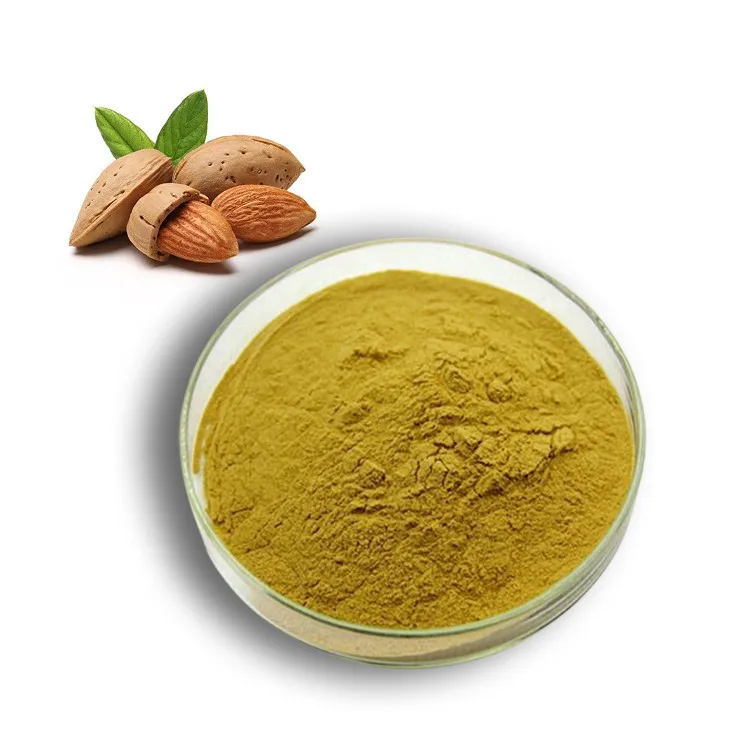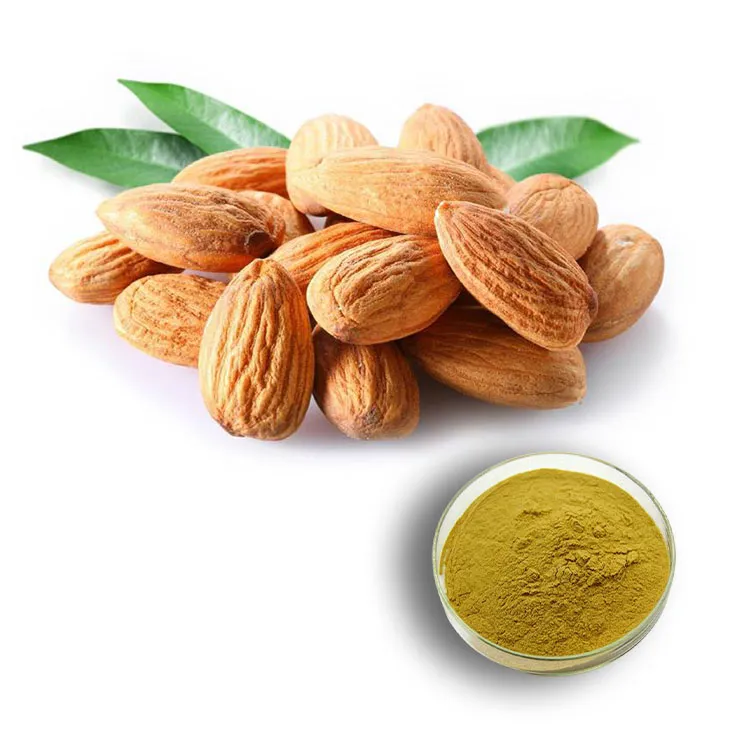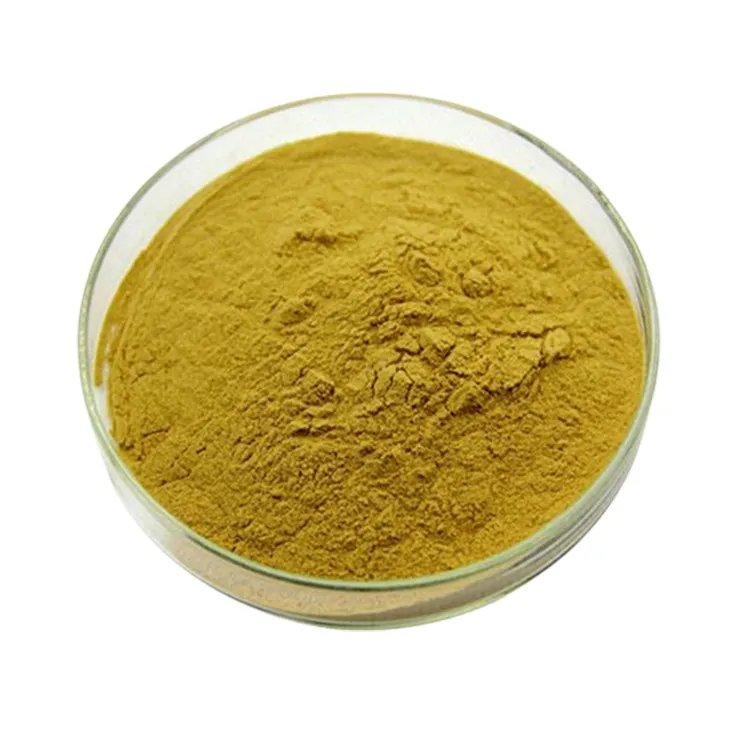- 0086-571-85302990
- sales@greenskybio.com
The process of extracting almond oil from almond extract powder.
2024-11-28

1. Introduction
Almond oil has been widely used in various industries such as food, cosmetics, and pharmaceuticals due to its rich nutritional value and beneficial properties. Extracting almond oil from Almond Extract Powder is a process that requires careful consideration of multiple factors. Understanding this process is essential for obtaining high - quality almond oil with optimal yield.

2. Understanding Almond Extract Powder
Composition of Almond Extract Powder: Almond extract powder contains a variety of components. It mainly consists of proteins, carbohydrates, fats, and some minor components such as vitamins and minerals. The fat content is of particular interest when it comes to almond oil extraction as it is the source of the oil. Proteins and carbohydrates can affect the extraction process by interacting with the solvents and the extraction conditions.
Source and Quality of Almond Extract Powder: The quality of almond extract powder depends on the source of the almonds. Almonds from different regions may have different characteristics. For example, the variety of almonds, the soil conditions, and the climate during their growth can all influence the composition of the extract powder. High - quality almond extract powder should be free from contaminants such as pesticides, heavy metals, and mold.

3. Solvents for Almond Oil Extraction
3.1. Organic Solvents
Hexane: Hexane is a commonly used organic solvent for almond oil extraction. It has a low boiling point, which makes it easy to evaporate and separate from the oil after extraction. However, hexane is a flammable and volatile solvent, which requires strict safety measures during the extraction process. Moreover, there are concerns about the residual hexane in the final product, as hexane is a petroleum - derived solvent and its presence in food or cosmetic products may pose potential health risks.
Ethanol: Ethanol is another option as an organic solvent. It is considered a more "natural" solvent compared to hexane as it can be derived from agricultural products. Ethanol is also less toxic than hexane. However, the extraction efficiency of ethanol may be lower than that of hexane, and it may extract some other components in addition to the oil, which may require additional purification steps.
3.2. Supercritical Fluids
Carbon Dioxide (CO₂) as a Supercritical Fluid: Supercritical carbon dioxide has become an increasingly popular solvent for almond oil extraction. At supercritical conditions (above its critical temperature and pressure), carbon dioxide has properties similar to both a gas and a liquid. It can penetrate into the almond extract powder effectively and selectively extract the oil. One of the major advantages of using supercritical CO₂ is that it is non - toxic, non - flammable, and leaves no residue in the final product. Additionally, the extraction process using supercritical CO₂ can be easily controlled by adjusting the temperature, pressure, and flow rate of the fluid.

4. Influence of Temperature, Pressure, and Extraction Time
4.1. Temperature
Temperature plays a crucial role in almond oil extraction. For organic solvents like hexane, an appropriate temperature can increase the solubility of the oil in the solvent, thus improving the extraction efficiency. However, if the temperature is too high, it may cause degradation of some components in the almond extract powder or the oil itself. In the case of supercritical CO₂ extraction, increasing the temperature can change the density and diffusivity of the supercritical fluid, which affects its extraction ability. Generally, for supercritical CO₂ extraction, a temperature range of 40 - 60°C is often considered suitable for almond oil extraction.
4.2. Pressure
Pressure is also an important factor, especially in supercritical fluid extraction. Higher pressure can increase the density of the supercritical fluid, which enhances its solvent power. For example, in supercritical CO₂ extraction of almond oil, pressures typically range from 100 - 300 bar. At lower pressures, the extraction efficiency may be low, while at extremely high pressures, it may require more complex equipment and higher operating costs.
4.3. Extraction Time
The extraction time affects both the yield and quality of the almond oil. A longer extraction time may increase the yield of the oil as more time is allowed for the solvent to interact with the almond extract powder. However, if the extraction time is too long, it may also lead to the extraction of unwanted components or the degradation of the oil. In general, the extraction time needs to be optimized based on the specific extraction method and the characteristics of the almond extract powder. For example, in hexane extraction, an extraction time of 2 - 4 hours may be appropriate, while in supercritical CO₂ extraction, the extraction time may be shorter, usually around 1 - 3 hours.

5. Extraction Process
5.1. Preparation of Almond Extract Powder
Before extraction, the almond extract powder needs to be properly prepared. This may include steps such as sieving to ensure a uniform particle size, which can affect the contact area between the powder and the solvent. Additionally, the powder should be dried to an appropriate moisture content. High moisture content can interfere with the extraction process as it may compete with the oil for the solvent or cause hydrolysis of some components.
5.2. Solvent - Powder Interaction
Once the powder is prepared, the solvent is added to the almond extract powder. In the case of liquid solvents like hexane or ethanol, the powder and solvent are usually mixed in a suitable container, such as a flask or a stirred tank reactor. For supercritical CO₂ extraction, the almond extract powder is placed in an extraction vessel, and the supercritical CO₂ is pumped into the vessel. The mixing or contact between the solvent and the powder is crucial for efficient extraction. Adequate agitation or flow of the solvent can improve the mass transfer between the powder and the solvent, leading to better extraction results.
5.3. Separation of Oil - Solvent Mixture
After the extraction, the oil - solvent mixture needs to be separated. In the case of organic solvents, this can be achieved through methods such as distillation. For hexane, the mixture is heated to the boiling point of hexane, which is around 69°C. Hexane evaporates and can be condensed and collected separately from the almond oil. In supercritical CO₂ extraction, the pressure is reduced to bring the supercritical CO₂ back to the gaseous state, and the CO₂ is released from the oil - CO₂ mixture, leaving the almond oil behind.
6. Purification Steps
6.1. Removal of Residual Solvent
Regardless of the solvent used, it is essential to remove any residual solvent from the almond oil. In the case of hexane extraction, the final almond oil may still contain a small amount of hexane. This can be removed through processes such as vacuum evaporation or steam stripping. For ethanol - extracted oil, similar methods can be used to remove the remaining ethanol. In supercritical CO₂ - extracted oil, since CO₂ is non - toxic and leaves no residue under normal conditions, the removal of "residual solvent" is not a major concern, but it is still necessary to ensure that all the CO₂ has been completely removed.
6.2. Filtration and Clarification
After the removal of the solvent, the almond oil may still contain some impurities such as fine particles or other non - oil components. Filtration is a common method to remove these impurities. This can be achieved using filters with different pore sizes, such as filter paper or membrane filters. Clarification can also be done through methods such as centrifugation, which can separate the heavier impurities from the oil by spinning the oil at a high speed.
6.3. Degumming and Neutralization
Some almond oils may contain gums or free fatty acids that can affect the quality and stability of the oil. Degumming is a process to remove these gums, usually by adding water or an acid and then separating the gum - water or gum - acid mixture from the oil. Neutralization is used to reduce the acidity of the oil if it contains a high level of free fatty acids. This can be done by adding a base such as sodium hydroxide and then separating the soapstock (formed by the reaction of the base with the free fatty acids) from the oil.
7. Conclusion
The process of extracting almond oil from almond extract powder involves multiple steps and factors. The choice of solvent, the control of temperature, pressure, and extraction time, as well as the purification steps all play important roles in obtaining high - quality almond oil with a good yield. With the increasing demand for natural and high - quality oils in various industries, continuous research and improvement in almond oil extraction methods are necessary to meet the market requirements.
FAQ:
What are the common solvents used in extracting almond oil from almond extract powder?
Some common solvents include hexane, ethanol, and supercritical carbon dioxide. Hexane is often used due to its good solubility properties for lipids, but it has the drawback of being a petroleum - derived solvent and may leave residues. Ethanol is a more environmentally friendly option, especially in applications where the final product is for food or cosmetic use where solvent residues need to be minimized. Supercritical carbon dioxide offers high selectivity and can produce a very pure product, but the equipment required for supercritical fluid extraction is more expensive.
How does temperature affect the extraction of almond oil from almond extract powder?
Temperature plays a significant role. Generally, increasing the temperature can enhance the solubility of the oil in the solvent, which may lead to a higher extraction yield. However, if the temperature is too high, it can cause degradation of the oil components, especially the unsaturated fatty acids which are important for the quality of almond oil. Also, different solvents may have different optimal temperature ranges for extraction. For example, for hexane extraction, a moderately elevated temperature within a certain range can be beneficial, but exceeding that range can be detrimental to the quality of the extracted oil.
What is the role of pressure in the extraction process?
When using certain extraction methods like supercritical fluid extraction (where supercritical carbon dioxide is used), pressure is a crucial factor. By adjusting the pressure, one can control the density and solvent power of the supercritical fluid. Higher pressure can increase the solubility of almond oil in the supercritical carbon dioxide, which can improve the extraction efficiency. In other solvent - based extractions, pressure can also have an impact on the mass transfer rate between the solid (almond extract powder) and the liquid (solvent), although its influence may not be as pronounced as in supercritical fluid extraction.
How can the quality of the almond oil be ensured during the extraction process?
To ensure the quality of almond oil during extraction, several factors need to be considered. Firstly, the choice of solvent is important. As mentioned before, solvents that are less likely to leave harmful residues should be preferred. Secondly, the extraction conditions such as temperature, pressure, and extraction time should be optimized. Maintaining appropriate temperature and pressure helps prevent degradation of the oil components. Also, the extraction time should not be too long to avoid over - extraction which may introduce impurities. After extraction, proper purification steps like filtration and distillation are necessary to remove any remaining solvent, impurities, or by - products.
What are the typical purification steps after extracting almond oil from almond extract powder?
Typical purification steps include filtration and distillation. Filtration is often the first step to remove any solid particles that may have been carried over during the extraction process. This can be done using various types of filters such as filter paper or membrane filters. Distillation is used to remove the solvent from the extracted oil. For example, if hexane was used as a solvent, distillation at an appropriate temperature and pressure will allow the hexane to be evaporated and separated from the almond oil, leaving behind a more purified product. In some cases, additional steps like deodorization or winterization may also be carried out to further improve the quality of the almond oil.
Related literature
- Almond Oil Extraction: A Review of Traditional and Modern Techniques"
- "The Influence of Solvent Selection on Almond Oil Quality during Extraction from Almond Extract Powder"
- "Optimizing Temperature, Pressure and Time in Almond Oil Extraction from Almond Extract Powder"
- ▶ Hesperidin
- ▶ citrus bioflavonoids
- ▶ plant extract
- ▶ lycopene
- ▶ Diosmin
- ▶ Grape seed extract
- ▶ Sea buckthorn Juice Powder
- ▶ Beetroot powder
- ▶ Hops Extract
- ▶ Artichoke Extract
- ▶ Reishi mushroom extract
- ▶ Astaxanthin
- ▶ Green Tea Extract
- ▶ Curcumin Extract
- ▶ Horse Chestnut Extract
- ▶ Other Problems
- ▶ Boswellia Serrata Extract
- ▶ Resveratrol Extract
- ▶ Marigold Extract
- ▶ Grape Leaf Extract
- ▶ blog3
- ▶ Aminolevulinic acid
- ▶ Cranberry Extract
- ▶ Red Yeast Rice
- ▶ Red Wine Extract
-
Soy Extract
2024-11-28
-
Kidney Bean Extract
2024-11-28
-
Saw Palmetto Extract
2024-11-28
-
Yam Extract
2024-11-28
-
Sugarcane Extract
2024-11-28
-
Mangosteen extract powder
2024-11-28
-
Baicalin
2024-11-28
-
Oat Straw Extract Powder
2024-11-28
-
Hawthorn powder
2024-11-28
-
Pomegranate Extract
2024-11-28





















